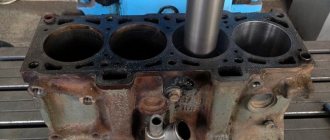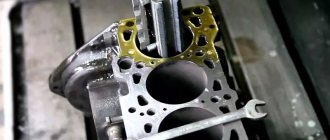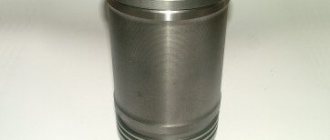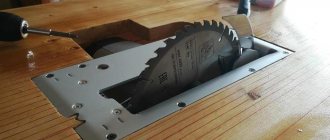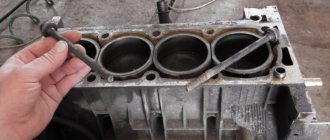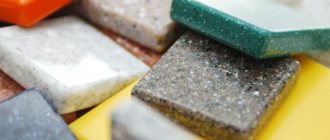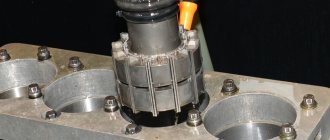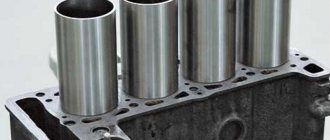VasKey › Blog › CYLINDER HONING TECHNOLOGY
Cylinder honing, along with boring, are integral attributes of engine overhaul.
Let's consider what honing is, how the final processing of liners, cylinders, bushings is carried out and what tools and equipment are needed for do-it-yourself repairs. Let's answer the question, which is better: a mirror or a hon? WHAT IS HONING
Honing is an abrasive surface treatment to produce an ordered roughness. The application of hone is the final stage of processing metal parts. In this case, not only cylinder walls or liners can be honed, which can be bored to the required repair size during an engine overhaul, but also connecting rod bushings and the crankshaft bed. Honing is also used for finishing surfaces.
Reasons for cylinder honing:
— approaching the ideal geometric shape of liners, cylinders, bushings. Due to the error of even the best quality boring tool, after boring the cylinder may have a slightly barrel-shaped, cone-like shape. Any change in the shape of the cylinder from the ideal geometry of the circle and a displacement of the axis of the hole in the engine cylinder block leads to a decrease in compression and a decrease in the service life of the cylinder-piston group; — the accuracy of surface treatment with a hone is significantly higher than in the case of processing with boring and grinding tools. This feature allows you to obtain the required surface cleanliness class and achieve a better fit of the piston rings to the cylinder walls; — obtaining the required roughness structure. The correct notch allows you to hold motor oil on the cylinder walls, preventing dry friction of rubbing pairs and, as a result, accelerated wear of CPG parts. Also, ordered roughness prevents severe wear of parts when, for certain reasons, short-term dry contact of rubbing pairs occurs.
The essence of the honing process is to uniformly remove micron layers of metal. For this, a special tool is used - a hon. The working surface of the honing head touches the inside of the surface being machined along a trajectory combining rotational and reciprocating movements.
The treatment is carried out using a special cutting fluid, which can be kerosene or a working fluid based on water-oil emulsions (used when processing products with high requirements for coating quality).
During the honing process, it is extremely important to ensure uniform pressure on the grinding edge, since only in this case will it be possible to obtain a uniform scoring depth and a nearly ideal geometric shape of the inner surface of the cylinder. To eliminate possible uneven processing, the rod sets the hone to small circular vibrations around its axis.
For long engine life, the hone on the cylinder walls must be of the correct shape. The wear graph of engine rubbing parts shows that the most intensive reduction in service life occurs at the stage of grinding in parts and in the last kilometers, when significant gaps appear between the rubbing pairs. To reduce engine wear and reduce the break-in period, the manufacturer uses flat-top honing. Proper processing helps ensure that the piston rings have a good fit already several hundred kilometers after the engine has been in operation. Flat-top processing is carried out in 2 stages: coarse and fine abrasive.
The required camber angle of the hatching should be about 60º with a deviation of no more than 20º. Characteristics of the depressions after removing a tiny fraction of metal from the surface of the cylinders:
- should not have torn, sharp edges; — there are no deformed areas; - depth and width must be uniform.
HONING TOOLS
Special bars are used as abrasive materials. The bars themselves differ not only in geometric parameters, but also in the degree of abrasiveness of the material and wear resistance. For professional processing, a hone is used, in which a set of abrasive stones is fixed in a metal mandrel, and the stones themselves are located evenly around the perimeter of the honing head. The design of the mandrel allows you to set the desired outer diameter. The honing head is attached by a coupling to a steel rod. The rod itself is fixed in the machine chuck, which is determined by the hone movement algorithm.
For honing cylinders with your own hands, 2 types of amateur tools are used:
— flexible honing brushes (bottle brush). The device is an attachment for a hand drill or screwdriver, at the end of which there is a honing brush. Grinding stones mounted on spring legs are used as abrasive materials;
— 3-jaw devices for manual honing. Grinding stones are used as abrasive materials. The tool rod can be fixed in the chuck of a screwdriver or drill.
THE FEEDABILITY OF REPAIRING WITH YOUR HANDS
You should resort to self-honing of cylinders only if it is not possible to use machining. When honing with your own hands, it is impossible to create an orderly roughness. Not only the amplitude and nature of the movements will depend on the position of the drill, but also the force of pressure of the stones on the walls of the cylinder and liner. Of course, there can be no talk of bringing the form to geometric ideals.
The essence of honing, the machines and tools used
Description of the honing process and its varieties. Machines and tools used during the honing stages. The bars used for work. Extrusion and flat top honing.
Honing is a process of treating a metal surface using diamond chips. It is mainly used for grinding conical and cylindrical parts. This operation is convenient when making holes. The resulting surface roughness value corresponds to the level of fine turning or grinding with a coarse-grained abrasive wheel. Only the honing method can achieve the desired result when working with a cylinder block. At the interfaces between parts there must be lubricant, which is held in place by a specially applied honing mesh.
The honing tool used is called a hone. These are bars or stones that are placed around the perimeter of the base. During operation, they are erased, so the design of the clip allows for the possibility of replacing them.
Special machines are used for the honing process. These are devices with a horizontal or vertical arrangement in the spindle space. Each of them has its own purpose depending on the work being done. Honing equipment is specialized for narrow profiles. The production of universal machines is a thing of the past.
Description of the honing process and its types
During the honing process, an abrasive effect occurs on the surface of the workpiece. The goal is to obtain the desired surface roughness and achieve the required dimensional accuracy using a honing tool. A diamond block acts in this capacity. Often the diamond chips are located on a ceramic bond. Ceramic honing is used along with bakelite. The resulting parts minimize friction losses when working in conjunction with other structural elements.
There are several types of honing:
- Dry. In this process, no lubricating fluid is involved.
- Vibration. This is a method in which vibration provides additional assistance.
- Electrochemical. Not only mechanical forces are involved in the process, but also an electrochemical factor.
- Extrusion honing. The video shows the whole process, which is literally mesmerizing while watching.
- Flat-topped, or plateau honing.
On flat tops
On flat tops
Having not spent much on it, the owner at first was only happy: the car’s acceleration improved, oil and fuel consumption decreased, but after 20 thousand kilometers the holiday was over. And here we have a hero. They removed the cylinder head, showed the owner their working surfaces - well, how did they say? And the man, seeing the smooth mirror and touching it with his fingers, exclaimed in bewilderment: “Everything is fine here!”
As if it weren’t so... The thing is that there is little left of the former “mesh” of flat-top honing, and the oil is not retained on the mirror surface and the rings rub without lubrication. Accelerated wear is inevitable.
Well, how are engines repaired today? Like the heroes with whom we started the conversation, many “masters” do not fool themselves with the intricacies of technology. More serious ones rely on factory repair recommendations. Example: restoring a Zhiguli cylinder block using VAZ technology requires 4.5 standard hours (boring, honing, washing, etc.), which will cost the client 2–2.5 thousand rubles. But there are already companies that will prepare a block for installation of repair pistons several times faster, and with a flat-top roughness profile. And the price of the work is two or three times less. How is this achieved?
Modern high-performance machines allow you to quickly repair the cylinder block. For example, (photo 2) with a double-joint drive of the honing head. Its important advantage is that the head is centered on the unworn surfaces of the old cylinder (in the upper and lower zones) - the working surface of the increased diameter turns out to be strictly coaxial with the old one. This makes it easier to base the block on the machine. And the design of the head is such that the abrasive bars, as they are processed, are applied rigidly to “unclamp”, due to which (unlike a conventional “spring” head) the resulting surface does not depend on the errors in the shape of the previous, worn-out cylinder. The new surface is almost perfect in ovality and taper.
Increasing the cylinder diameter to the next repair size, for example by 0.4 mm, on such equipment does not require traditional boring at all. The honing head does everything. First, increase the diameter by 0.3 mm with coarse abrasive stones. Then another 0.1 mm - with bars with finer grains. Finally, it forms flat tops with fine-grained stones or special diamond-coated brushes.
The increase in cylinder diameter during the last operation does not exceed a micron and has no practical significance. But from the tops of the roughness, part of the damaged metal, loosened during the previous processing, is removed and grains of graphite contained in the cast iron appear on their surface. They reduce ring friction to a minimum. Note: processing a typical four-cylinder block on this machine takes about 30 minutes.
A cylinder block after flat-top honing is less demanding on running-in and lasts much longer until the next major repair. To a large extent, this explains the increased mileage of engines of foreign cars, as well as VAZ “eighth-tenth” families compared to the “classic” Zhiguli.
The concept of “repair size” today is almost inapplicable to the most progressive engines of foreign cars. In most cases, repairs involving an increase in cylinder diameter are not provided: the block, pistons, rings are only nominal, and the spread of diameters (photo 1) does not exceed 0.01 mm. For Russian engines, there are still repair sizes, and each is more subtly divided into classes. For example, for VAZ engines - A, B, C, D, E, where each subsequent size is 0.01 mm larger than the previous one. After final processing of the cylinder, the piston must be selected for it, taking into account the required thermal clearances. For example, for engines of front-wheel drive VAZ cars, the installation gap (the difference in the diameters of the cylinder and piston) is 0.025–0.045 mm.
Flat-top honing has been known for a long time, dating back to piston aircraft engines. The idea found much greater development in the automotive industry. The point is simple. For a motor assembled after traditional honing, the microprofile of the cylinder working surface resembles a mountain range with sharp peaks (Fig. 1, a). During the initial period of operation (during break-in), these protrusions are quickly smoothed out and destroyed until sufficiently large “supporting planes” appear - now the rate of engine wear will decrease. It makes more sense, however, to create in advance the required roughness of the working surface with flat tops (Fig. 1, b) and take it into account in the mounting gaps during assembly.
Honing and repair of Alusil and Nicasil cylinders
Honing a cylinder block made of aluminum alloy has its own characteristics.
- AlusilBlocks made using Alusil technology are now officially equipped with repair piston sizes from manufacturers (usually the sizes are +0.5 mm and +1 mm, less often smaller pitches of +0.35 and +0.7 mm are used). Repair-sized pistons, just like standard ones, are coated with a thin layer of iron on top. Engine repairs using uncoated pistons result in rapid “sticking” and jamming of the piston group.
Repair kits are manufactured specifically for the technology of boring aluminum blocks. Failure to comply with the technology results in rapid failure of the repaired engine.Boring is performed with standard cutters, which are used on cast iron blocks. The main difference lies in the honing process. Special abrasive bars with an “anti-sagging” surface should be used. They remain clean throughout the entire operation. Otherwise, the particles of aluminum remaining on the honbrusk, when heated, set on the surface of the cylinder, and scuffing will instantly form.
The world's largest manufacturer of tools, Sunnen, which also produces honing stones, recommends using equipment based on abrasive particles of silicon carbide (SiC) when honing cylinder blocks made of aluminum alloys.
Three types of bars are consistently used. The first block of type C30-J55 removes the worn layer with an allowance of 0.04–0.08 mm after boring. The second type C30-J84 performs honing and increases the repair size by 0.01-0.02 mm, and also removes defects from the previous operation. The third type C30-C03-81 carries out finishing grinding without changing the repair size.
After boring the aluminum block, you must thoroughly rinse it from chips. Even minor contamination causes aluminum to stick to the cylinder walls and the abrasive tool. Scoring and tearing out of abrasive particles occur.
Honing is carried out when three conditions are met. First, thorough filtration of the coolant and lubricant. Secondly, moderate pressure of the abrasive bars against the wall of the block. Thirdly, an exact match between the diameters of the bar and the piston. Violation of these conditions leads to overheating of the treated surface and tearing of abrasive grains from the bar. All this is accompanied by the formation of scoring and deterioration in the quality of processing. If you do not set up the process in time, you can irrevocably ruin the entire work.
Honing the cylinder block allows you to achieve the optimal size and precise gap between the rubbing parts (from 0.01 to 0.02 mm). However, the work surface does not yet meet the roughness requirements, so it needs to be smoothed using a finishing treatment.
Polishing during engine overhaul serves as an alternative to chemical etching used in production conditions. As a result of polishing, a very small layer of aluminum (about 1 micron) is removed and silicon crystals are exposed. For this purpose, soft felt shoes C30-F85 are used, fixed in the honing head, and a soft silicone paste based on AN-30 silicone, which does not affect silicon inclusions, but removes the excess layer of aluminum.
After polishing with silicon paste, the surface becomes a characteristic dark gray color, and there should be no traces of a hone or other cutting tool on it. Its structure contains silicon grains, and the main layer of aluminum alloy, which is a binder, is 1-2 microns deeper. Due to randomly scattered silicon inclusions, the structure becomes porous. Due to this, the oil is retained in micropores during engine operation and creates a film that envelops the rubbing parts.
The German company Gehring offers another technology for processing cylinders made of aluminum alloys. The main difference is present at the roughing stage. Thus, instead of the first SiC-based abrasive stone, diamond-coated stones are used at the first processing step, and then at the final honing stage and at the final polishing stage, honing stones and silicone carbide-based polishing paste are used.
The proposed boring and honing technologies are used both for blocks based on aluminum alloys Alusil (Silumal), and for more advanced versions of Lokasil and Silitec (silicon sleeve filled with an aluminum alloy consisting of 25% silicon compounds). In any case, the geometry and microstructure of the cylinders does not differ from the factory one.
If scuffs or other defects in the cylinders exceed the repair dimensions in depth (up to 0.7 mm or in some blocks up to 1 mm), then such repairs cannot be made using boring and honing. Here you need to use replaceable sleeves. Similar parts are supplied for some types of blocks in the form of spare parts.
Replacement liners are made of a material homogeneous in composition with the cylinder alloy. This is usually aluminum containing up to 17% silicon compounds. Replacing aluminum sleeves, as a rule, is no different from replacing cast iron analogues. The main difference between aluminum is its higher thermal conductivity.
Rules of thumb for replacing liners require that the liners be cooled vigorously (e.g., in liquid nitrogen or in a deep freezer) and that the cylinder block be heated vigorously. The sleeve must be inserted quickly so that it does not have time to heat up even from simple manual effort without the use of a press or impact tools.
A characteristic feature of the aluminum sleeve is the impossibility of adjustment in the event of an inaccurate fit in the block. A cast iron sleeve can be pressed in, but an aluminum sleeve in this situation begins to deform. It can only be removed by boring on a lathe. This actually means that you need to buy a new sleeve and usually wait several days for your order.
After installation, the liners are bored and honed using the technology described above. Pay special attention to the protrusion of the sleeves above the mating surface of the block - it is not recommended to trim it when boring the sleeves. Otherwise, the protrusion of the pistons at top dead center may exceed a maximum value of about 0.5–0.7 mm. There may also be a difference in height between the plane and the top of the front cover of the unit.
- NicasilNicasil aluminum alloy has high strength and wear resistance, but there still comes a time when it becomes unusable. Is it possible to overhaul such a unit? Let us consider the characteristic features of this alloy in order to understand whether it is worth reducing it.
Given their excellent wear resistance compared to other aluminum alloys, these blocks require repairs less often. Based on this, most car factories do not produce repair pistons for these engines. Only owners of some BMW models can count on repair pistons and rings increased by 0.07-0.08 mm. If you are lucky and you find repair parts, and the surface of the cylinders has not yet worn out to a critical depth, you can try to do something.
Classic boring of Nicasil blocks is even theoretically impossible, because not a single cutter will take a silicon carbide alloy. And besides, considering the repair dimensions of the pistons are less than +0.1 mm, it is quite possible to get by with honing the cylinder block.
When processing such blocks, there are pitfalls. Not all honing stones are suitable. You can use either diamond or boron nitride based ones. Honing of the cylinder block is carried out with minimal pressure to ensure the integrity of the coating and not push it through in the thinnest places.
In general, the procedure requires maximum care and the highest qualifications of the master. But even in this case, success is not guaranteed. The ellipse of the block can become critical even with a deviation of 0.03–0.05 mm. The minimum force of the bar does not completely eliminate the incorrect geometry, and increasing the force can lead to chipping in a thin place of the ellipse. Therefore, it is not possible to return the block to ideal geometry in all cylinders.
A damaged coating (including that obtained during the honing process of the cylinder block) can be a death sentence for replacing the part. Manufacturers usually do not regulate the repair of such defects. There are stories among auto mechanics about the possibility of re-coating the surface of the cylinders with Nikasil. Long practice shows that repeating production technology is expensive and impractical. Therefore, in most cases, honing cannot be carried out.
If the working surface of a block made using Nicasil technology is damaged, there are several options for solving the problem.
The most radical way is to replace the cylinder block or engine assembly. This option is suitable for a new car under warranty, but for a ten-year-old car the cost of the motor may exceed its own price.
Europe is full of auto wrecking yards where you can get a used engine. This is a cheap option. But in our country this market is still underdeveloped. In addition, in addition to buying a motor, you will have to fuss with documents and registration.
A “folk” way to line an aluminum motor with cast iron liners.
Manufacturers categorically do not recommend such a replacement. But if you don’t listen to them and have sufficient qualifications, then it is quite possible to carry out such a sleeve. There is already quite a lot of experience and developed technologies for using cast iron liners in blocks made of aluminum alloys.
Blocks made using Nicasil technology are quite suitable in terms of their characteristics, since the strength and roughness of cast iron and Nicasil surfaces are similar, and the pistons slide equally well in both cases. Nuances are possible on older engines that use rings without chrome coating. Such rings require more frequent replacement due to their accelerated wear.
How to bore a cylinder correctly
Although, we must be honest, modifying the cylinder head with your own hands is only partially possible. You can disassemble the cylinder head and dismantle the cylinder block with your own hands. You yourself can measure the gap between the piston and cylinder and even liner it.
But the further procedure - boring the cylinder head can only be carried out using specialized equipment.
If honing cylinders in some cases can be done with your own hands using a manual honing head and an electric drill, then turning cylinders is a long and special technological process.
With your own hands, you can later, after boring and honing the cylinder block, assemble the unit.
Most likely, you yourself will not stand at the machine, but it will not hurt you to know the technology for boring the cylinder head.
Most often, cylinder boring is necessary to increase the volume of the socket for the repair kit. In this case, you should already know for what size of sleeves the boring will be done.
For boring, special boring machines are used. Due to their high cost, not every service station can afford to have such a machine. Therefore, as a rule, in cities there are only a few technical centers where cylinder heads are modified.
Turning cylinders is not a quick procedure and requires high precision. Boring occurs at low speed. This ensures high surface quality and accuracy up to 0.01 mm.
When processing the surface of a cylinder on a machine, all cylinders are parallel along their length while being perpendicular to their base—the plane. Taking into account some “curvature” of the blocks, parallelism to the crankshaft beds is ideal.
In the process of boring cylinders, an allowance must be left for honing the cylinders. This is approximately 0.1 - 0.15 mm.
Why so many? This layer of metal is defective after boring and is removed (polished) by honing. And such a small allowance prevents the cylinder axis from skewing during honing.
Why is honing necessary?
When six-digit numbers appear on the odometer and the engine begins to behave differently than the driver is accustomed to, it’s time to think about a major engine overhaul. Many people think that “capital” comes down to banal cylinder boring. Indeed, it is very important to remove scratches and irregularities from their walls. But the work doesn't end there.
Boring on the machine is carried out at low speed. Working with high-strength metal at high speeds will not allow for uniform processing, so you have to avoid them. Moreover, due to the physical properties of the alloy from which the cylinder walls are made, at low speeds, processing the walls will disrupt the integrity of the upper thin layer of metal. Honing helps to cope with the consequences.
Repairs other than boring
Boring simply removes scratches. But this is not enough. The walls of the cylinders must be smooth, but in addition, the cylinder itself must be perfectly round. When boring cylinders, when taking measurements and choosing the diameter of the repair kit liners, leave a so-called “allowance” for honing, no more than a tenth of a millimeter. The bottom line is that this layer of metal in the cylinder after boring will be defective, and it must be removed so that its remains do not become compressed during operation and scratch the walls again. After all, then the entire process of overhaul will be meaningless.
In essence, honing is an abrasive treatment of the cylinder walls. It is so called because of the honing tool called the hone or head. Such a head rotates inside the cylinder, while simultaneously removing the defective layer, washing the walls with a special liquid to avoid scratches and damage. This liquid is usually either pure kerosene or a mixture of it with machine oil. A honing machine assumes that the engine is securely mounted on the frame (in fact, the same as a machine for boring it).
After honing the cylinders, the rings are guaranteed to fit tightly on them, creating the necessary conditions for the combustion chambers. If this is not done, the engine settings will be incorrect, since unaccounted air will enter the combustion chamber. This situation will lead to abnormal operation of the motor, which will greatly affect its service life and will negate the effect of major repairs.
Let's go to the garage
Now that you know what it is, it's time to start honing your cylinders yourself. Unlike boring, which you cannot do without a special machine due to high accuracy requirements, when honing you can do it with almost improvised means.
The first thing you will need is a honing head. This abrasive tool is designed, among other things, for use with a regular household electric drill; this is very convenient for us. Making the liquid at home is also not a problem: mix kerosene with oil in a separate container, and you’re done.
The main thing to watch out for when boring and honing at home is misalignment. As soon as you disturb the polishing angle and shift the piston stroke axis at an angle imperceptible to the eye, a major overhaul rapidly reduces its usefulness. Therefore, if possible, put together a safety net for yourself: a rod, a level, or just a banal guide. Then place the hone head inserted into the drill chuck into the bored cylinder and rotate for several minutes, constantly pouring the prepared liquid over the cylinder walls.
Conclusion
The honing process itself is simple. It is technically and technologically free to perform in a garage, without requiring special knowledge and skills from the car owner. The only thing that can cause any difficulty is the choice of honing head. However, given that their sizes are unified, this can also be called complexity only with great stretch.
However, cylinder honing should not be taken lightly. Despite its apparent simplicity, the process is demanding in terms of precision. As we wrote above, it is important to maintain the correct angle and maintain the axis of the piston stroke in the cylinder.
Honing cylinders after boring
Honing is the abrasive processing of materials using hones (honing heads). Honing of cylinders is carried out on specialized machines, the processing is accompanied by abundant irrigation of the surface.
Traditional honing fluids are used: kerosene or a mixture of oil and kerosene. There is also a technology for honing cylinders with water to which they are added. Typically, synthetic substances to prevent corrosive processes.
All. Your technician called you and you can go pick up the cylinder head. The modification of the block head, in the form of boring and honing, was successful. Now you can again, with your own hands, continue the process of tuning the engine or repairing the cylinder head.
And don’t forget that assembling a cylinder head is a process no less important and complex than boring and honing cylinders.
Proper Methods for Honing Engine Cylinders
This process primarily means the abrasive treatment of surfaces with hone (honed heads). Abrasive wires are attached to the head of a special tool. This procedure is one of the stages of engine overhaul; it is carried out in order to reduce the roughness of liners and cylinders and increase engine operating time. We will reveal how this operation proceeds later in the article.
How to properly hone engine cylinders
Honing of cylinders (application of hone, honing of cylinders) - abrasive treatment of surfaces using hone (honing heads). Such heads should be understood as the head of a special tool on which abrasive bars are attached. Honing is often used to machine internal cylindrical holes. The honing process involves a combination of rotational and reciprocating movements of the hone with fixed sliding abrasive stones. Honing is also accompanied by the constant application of a special liquid to the surface being treated for lubrication and cooling.
We also recommend reading the article on how to choose the right piston rings. From this article you will learn about the features of selecting repair piston rings by size and other parameters.
The final hone on the cylinder walls is a kind of rough mesh that helps retain the required amount of engine oil on the cylinder walls and improves the running-in and lubrication of rubbing parts. This procedure is aimed at ensuring high-quality running-in of CPG parts (in particular, piston rings and cylinder walls). Honing can also increase the service life of the engine after assembly and increase the efficiency of the engine lubrication system. In the latter case, the hone on the cylinder walls allows the lubricant to be stably retained, resulting in the formation of an oil film of sufficient thickness, improved lubrication and cooling of loaded parts, and minimized friction losses.
Which is better, honing or grinding engine cylinders?
Any motor is subject to wear and tear during operation. Engine cylinders gradually change their original shape, becoming ellipsoidal, oval, cone-shaped, etc. Scores, scratches, and in some cases cracks and other defects appear on the cylinder walls. For normal operation, such motors require major overhauls.
What is honing
What exactly is cylinder honing or boring? As we have already mentioned, this is a very important stage in repairing the engine, since it serves as the final stage in major work on the car’s power plant. Boring is used to process not only the parts we have already listed, but also bushings, connecting rods, crankshaft beds and, moreover, it is applied to planes. Now let’s look at the most important question: why carry out this procedure, and what benefit will your iron horse get from it?
Why do you need engine honing?
Any part does not last long. Each one, at one time, requires repairs, but a resourceful driver knows that there are methods and approaches that will extend the life of the part and save money. Honing the cylinder block is one such way out of the situation. As for the engine parts themselves, they change in parameters during their service. What's even less pleasant is the appearance of scratches everywhere.
As you well understand, all this has a very detrimental effect on the operation of the engine as a whole, and this is what it leads to worsening:
Therefore, it is worthwhile to immediately begin repair work on the unit, so that in the future you do not have to replace the crank mechanism, but here we are talking about a completely different amount. It can also be noted that during processing you can put old pistons on updated liners if they are still in good condition.
Now let's talk about processing technology. The work itself is done by the instrument from which the name of the operation comes, namely the hon. It moves over surfaces with rotational movements, cutting off layers of metal of very small sizes. Workers use cutting fluid to glide. Often this is the kerosene we all know, but other options based on water-oil emulsions are also allowed. The main thing is to correctly calculate the pressure in order to achieve a uniform and correct surface of the cylinder.
Why is cylinder honing necessary?
During operation, the engine is subject to both thermal and mechanical influences, which certainly change the shape of the cylinders. The cylinder must have a strictly defined height and diameter, which should not change along the entire length of the walls. However, long-term use and wear take their toll - the cylinders change their shape to barrel-shaped, cone-shaped or saddle-shaped. These changes are invisible to the naked eye, however, it is simply necessary to bring the shape of the cylinder to perfection. This is precisely what honing is used for, which can bore the cylinder to the most nominal dimensions with millimeter precision.
If the cylinders are not processed and everything is left as is, then you can get approximately the following picture:
- Reduced pressure in the cylinders (compression), loss of power. This parameter directly depends on the shape of the cylinder.
- Increased lubricant and fuel consumption . Through the gaps that may arise between the piston and the cylinder walls, the oil will rise into the combustion chamber, burn out and go into the exhaust system.
It would be good if all that was needed was boring the cylinders. However, there are times when major repairs become too costly. Many drivers managed to bring the engine to such a state that the entire crank mechanism needed to be replaced.
Honing Tool
The main professional tool is a structure consisting of bars (abrasive materials), which differ in parameters and level of abrasiveness. Due to the metal frame into which the bars themselves are fixed, you can set the desired parameters. The head, around which the bars are located, is connected by a coupling to the rod, which, in turn, is attached to the machine chuck.
Manual honing includes two types of tools:
- Attachment for a drill or even a screwdriver. It resembles a brush in appearance, but the abrasive material is stones attached to the tips of the springs.
- A device that folds out of three arms. The material is the same as in the previous version, as is the method of use (i.e. using a drill or screwdriver).
Which is better: honing or grinding engine cylinders
The difference between the two methods is that after grinding the surface will be extremely smooth, but in order for the lubricant solution to be retained, a slight roughness must be present. Therefore, in order to ensure high-quality and abundant lubrication of the piston rings, we advise you to resort to honing the parts.
Of course, some masters prefer not to use hone, as they claim that in any case, in the further operation of the motor, a mirror will be formed (the so-called smooth surface). We will not deny this, but think about how you will delay the next repair if you use a gentle hon. You will gain time and save money.
Let's summarize our article today. Do not forget to pay timely attention to the details of your engine, since a lot depends on it. We hope you now understand the advantages that this processing method brings with it. Good luck and don't forget to leave comments below.
